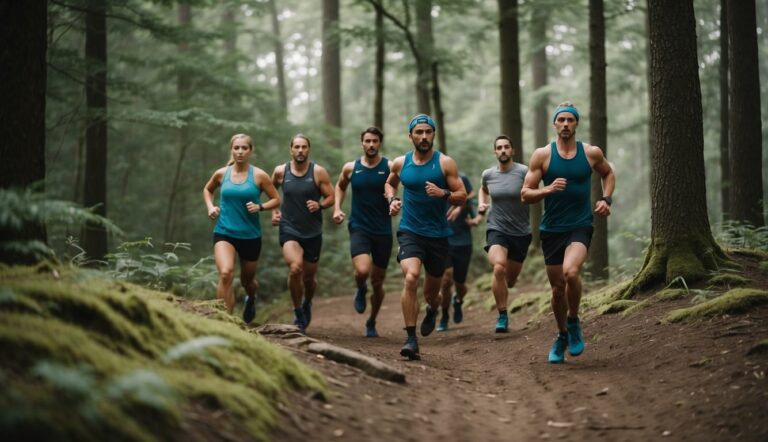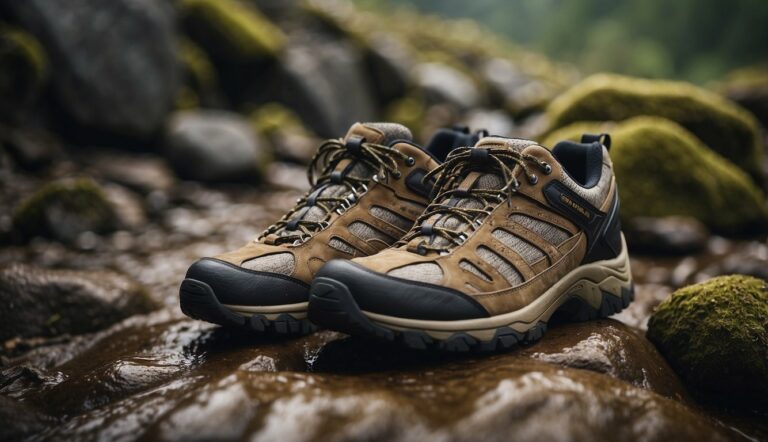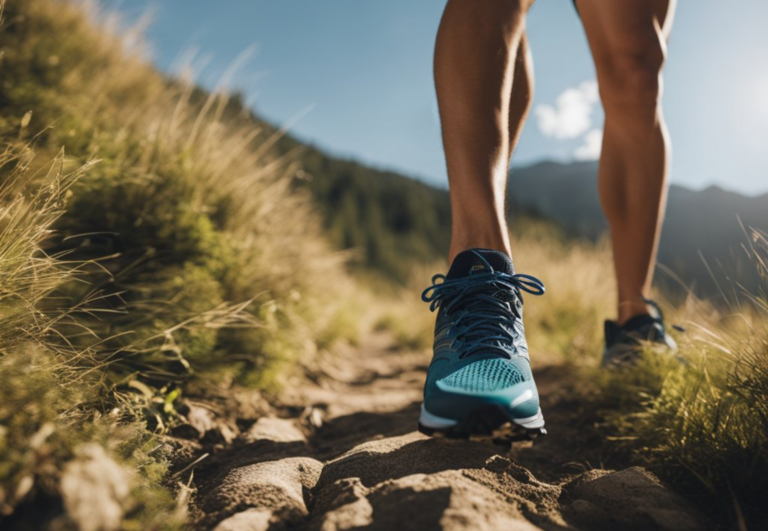How to Develop the Technical Skills You Need for Trail Running: Essential Techniques and Training Tips
As a UESCA certified running coach, I’ve learned that trail running is more than just a run through nature—it’s an art that demands technical prowess. Technical trails challenge runners with a gauntlet of roots, rocks, and variable elevations, requiring a skill set that blends agility, stability, and mental focus. Developing technical skills for trail running begins with building strength in your lower core and legs, which provides the stability needed to navigate uneven terrain confidently.
Improving your technical trail running also involves honing your ability to make quick decisions and adjust your stride on the fly. Training on the actual trails where you can practice navigating technical sections is invaluable. Exercises like planks, leg lowers, and balance work will complement your on-trail experience, strengthening your body and improving your ability to maintain control in challenging conditions. Engaging in cross-training can also contribute to leg strength, ensuring you have the power to propel yourself forward and manage the added demands of technical terrain.
the Basics of Trail Running – What Technical Skills are Important?
Trail running combines varied terrain with natural elements, making it essential to grasp the terminology and recognize the diverse range of terrains to prepare effectively.
Grasping Trail Running Terminology
Trail Running: I consider this to be the act of running over natural surfaces, which can range from forested paths to mountainous tracks. It’s not just about the distance, but also about navigating through nature’s obstacles.
- Technical Terrain: This refers to trails that offer challenges like rocks, roots, and steep inclines. These elements require careful foot placement and balance.
- Technical Trails: Trails that demand higher skill levels due to increased obstacles and natural barriers such as mud and water.
- Rock Plate: A protective feature in trail running shoes that shields feet from sharp rocks.
Navigating this type of terrain often means slower running paces and the need for protective footwear that offers both traction and stability.
Recognizing the Range of Trail Running Terrain
Trail running terrain varies widely and impacts both the difficulty and the techniques I need to use:
- Rocky Terrain: Consists of loose or fixed rocks that can shift underfoot, necessitating agile footwork.
- Steep Inclines: Require powerful leg muscles and can significantly affect heart rate and overall exertion.
- Muddy Terrain: Often slippery, demands shoes with a good grip to prevent falls.
| Terrain Type | Key Features | Footwear Suggestion |
|---|---|---|
| Rocky | Uneven surfaces, sharp edges | Durable shoes with rock plates |
| Steep | Sharp inclines, potential need for hands-free climbing | Shoes with strong ankle support |
| Muddy | Slippery surface, potential for shoe suction | Waterproof shoes with deep lugs |
Regardless of terrain, I always make sure to wear sunscreen, bring a hydration pack, and adjust my gear for the weather—hotter conditions mean lighter clothing but increased hydration needs.
Technical Skill Development for Trail Running

Technical trail running requires a blend of physical fitness and skillful movement. I’ll guide you through developing stability, strength, and precise foot placement essential for navigating technical terrains.
Building a Solid Foundation for Technical Trails
Developing technical trail running skills starts with a solid fitness base. I recommend incorporating strength training exercises that target key muscles used in trail running. Focus on:
- Core Stability: Planks and leg lowers help build lower core strength necessary for balance.
- Lower Body Strength: Squats, lunges, and deadlifts develop powerful glutes and legs.
- Ankle Strength: Exercises like ankle circles and calf raises improve ankle resilience.
A combination of strength training and balance exercises prepares you to tackle uneven terrain with confidence.
Sample Strength Training Routine
| Exercise | Sets | Reps |
|---|---|---|
| Planks | 3 | 60s |
| Leg Lowers | 3 | 12 |
| Squats | 3 | 15 |
| Lunges | 3 | 10 |
| Deadlifts | 3 | 12 |
| Ankle Circles | 3 | 15 per direction |
| Calf Raises | 3 | 20 |
Specific Skills for Navigating Obstacles
When faced with uneven surfaces on technical trails, agility and coordination become paramount. Practice drills that mimic trail conditions:
- Foot Placement Drills: Run through a line of evenly spaced small obstacles, focusing on quick and precise foot placement.
- Balance Drills: Utilize a balance board or a similar tool to refine your stability.
- Agility Ladder: Fast footwork is key to maneuvering through roots and rocks; use an agility ladder to hone those skills.
Regularly running on trails also sharpens the technical skills you need. Vary your routes to expose yourself to different obstacles and terrain types, this allows for continual adaptation and skill progression.
Safety and Navigation on the Trail
When it comes to trail running, safety is paramount, and navigation skills are essential. Proper preparation and technique can help you manage the unpredictable nature of the trails, ensuring a safer and more enjoyable run.
Learn to Slow Down and Use Tools
On the trail, I stay safe by recognizing when to slow down, especially during descents where losing control can easily lead to falls. For downhill running, where the risk of strain or falling is higher, I use a controlled, short stride. This allows for quick adjustments to the changing terrain.
In technical areas, walking or hiking may be safer than running. Understanding how and when to incorporate these techniques is crucial for managing energy levels and minimizing injury risk. Trekking poles are a valuable tool I recommend; they provide additional stability and can take some of the loads off the legs. Staying safe also means being adaptable; sometimes the best choice is to slow down, conserve energy, and maintain control.
- Strategies for Descents:
- Shorten your stride.
- Use a controlled pace.
- Engage your core for better balance.
- Practice using poles for stability.
Knowledge to Prevent and Handle Falls
Knowledge of how to prevent and handle falls is a non-negotiable element of trail running technique. I teach runners to use their arms for balance, like a tightrope walker, to aid in stabilization on uneven terrain.
Additionally, I advise building running confidence through practice and familiarity with the trail. The experience is the best teacher for learning how to navigate roots, rocks, and other obstacles.
Falls can still happen despite precautions, so knowing how to fall safely is important. I recommend aiming for a tuck and roll rather than an outstretched arm, which can cause more severe injuries. Protection of the head and vital organs is critical. Always carry essentials like food, water, and protection from the elements to deal with any unforeseen circumstances during a trail race or training run.
- Falling Techniques:
- Tuck and roll to avoid injury.
- Keep essentials on hand (food, water, protection).
- Build familiarity with different trail surfaces.
Remember, staying safe on the trails is a combination of awareness, technique, and the right gear. Keep these tips in mind and adjust your running approach accordingly to enjoy a successful trail running experience.
Physical Training and Conditioning

To excel in trail running, focusing on both strength development and endurance is essential. I balance these elements in my training programs, ensuring runners can tackle the diverse demands of the trails.
Strength Development
Developing strength, particularly in the lower core, is crucial for maintaining balance on uneven terrain. A focused strength training regimen includes exercises like planks, leg lowers, lunges, and squats.
These exercises target key muscle groups like the hamstrings and glutes, which are vital for powering up steep climbs and stabilizing during technical descents. In my experience, implementing a routine that incorporates a mix of these exercises for at least 2 days a week can significantly enhance stability and strength.
Endurance and Speed Work
Building endurance and speed is a matter of structured training. I incorporate uphill sprints and downhill drills to improve efficiency on varied terrains. For example, a typical speed workout might involve:
- 5 x 2-minute uphill sprints at maximum effort, with full recovery between each.
- 15 minutes of downhill running focusing on a quick cadence and controlled pace.
For endurance, longer runs at a steady pace are key, with an emphasis on incorporating challenging terrains that mimic race conditions. Running on actual trails, especially on long, steep climbs and technical descents, is invaluable for adapting to the rigors of trail racing. Time and effort are the measures I use instead of just pace because terrain can significantly affect run times.
Choosing the Right Gear and Equipment
When preparing for trail running, selecting the appropriate gear and equipment is crucial for both performance and safety.
Essential Gear for Optimal Performance
My experience has taught me that beyond the basics, there are specific items that can enhance your trail running performance.
A hydration pack is vital, as it allows you to carry water and essential nutrients without hindering your movements. Poles or trekking poles are also great for stability and support, especially when navigating steep or uneven terrain.
- Hydration Pack: Carry fluids and essentials.
- Trekking Poles: Aid in balance and propulsion.
Footwear and Clothing for Safety and Comfort
Navigating technical trails requires shoes equipped with a rock plate for protection against sharp objects like rocks, scree, and tree roots. Shoes should also have deep lugs for grip and a low profile for better ground feel to maintain a steady running pace with short, quick steps that improve agility and coordination.
As for clothing, it should be constructed from materials that wick sweat and allow for freedom of movement during technical maneuvers like squats, lunges, or when simply walking or hiking. Here’s what I recommend for trail runners:
-
- Protection: Durable with a rock plate.
- Traction: Deep lugs for grip on rough surfaces.
- Fit: Snug to prevent movement within the shoe.
-
- Material: Moisture-wicking fabric.
- Design: Flexible for full range of motion.
Accessories such as a headlamp for visibility and safety during dusk or dawn runs can also be a crucial part of your kit. Always equip yourself with gear suited to the terrain and weather conditions you expect to encounter.





